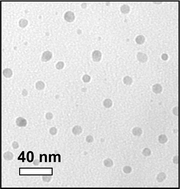Synthetic murataite, an isometric derivative of the fluorite structure, has been proposed as a host phase for the immobilization of lanthanides and actinides. In this study, murataite polytypes have been synthesized in the system Ca–Ti–U–Mn–Al–Zr–Fe–Ce–O by melting oxide mixtures at 1400–1600 °C followed by crystallization under slightly oxidizing conditions. The phase and structural compositions of the synthetic murataite ceramics were characterized by energy dispersive spectroscopy and transmission electron microscopy (TEM). The thermal stability was studied by in-situ heat treatment under TEM observation. The influence of radiation damage as a result of alpha-decay events of the incorporated actinides on the thermal stability of the synthetic murataite ceramics was simulated by 1 MeV Kr+ irradiation. A thermally induced, Fe-rich phase decomposition and nanocrystal formation was observed in murataite ceramics under vacuum above 573 K. Ce was closely associated with the Fe-rich phase in the Ce-incorporated murataite ceramics. Ion beam irradiation-induced amorphization inhibited the process of phase decomposition. The effects of thermally induced phase decomposition on the radiation resistance of murataite ceramics utilized as potential nuclear waste forms for the immobilization of actinides and, particularly plutonium, were also analyzed.

You have access to this article
 Please wait while we load your content...
Something went wrong. Try again?
Please wait while we load your content...
Something went wrong. Try again?


 Please wait while we load your content...
Please wait while we load your content...